- You cannot add "Betta fish/ fighter fish- female" to the cart because the product is out of stock.
Albino Paradise pair
Original price was: ₹700.₹499Current price is: ₹499.
Out of stock
Email when stock available
Description
A pair of Albino Paradise Pair
NOTE- This particular fish is limited only in all regions of kerala Banglore and Tamil nadu.outside these places we are sending only at customer’s risk
ALBINO PARADISE FISH
- Common Name : Paradise gourami, Blue paradise fish, Red and blue paradise fish, Blue paradise gourami
- Scientific Name : Macropodus opercularis sp. Albino
- Type : Freshwater fish
- Origin : Southeast Asia
- Size : 3-4 inches
- Life Span : 6-8 years
- Water Region : Upper and middle region of the tank
- Care Level : Easy
- Diet Omnivore
- Temperament : Semi aggressive with right tank mates
- Breeding : Easy
- Temperature : 61-79°F
- Ph : 5.8-8
- Hardness : 5-30 dGH
- Ideal tank size : 20 gallons
ORIGIN
Paradise fishes come under the family Osphronemidae, along with other notable members like dwarf gourami, kissing gourami, pearl gourami etc. It was discovered by Linnaeus in 1758 and brought to Europe in the 1800s making them one of the oldest tropical aquarium fishes kept by aquarium hobbyists along with gold fishes. Paradise fish is the oldest species in the genus Macropodus and are found in Southeast Asia, and some parts of Pakistan, India, Taiwan, China, Japan, US, Korea etc. These fishes inhabit lowland areas like paddy fields, ponds, streams, and marshes where the rate of flow of water is very low. Unlike other fishes, which breathe through gills, paradise fishes have a specialized organ called labyrinth organ, which help them to breathe atmospheric oxygen. This property helps them to survive in water that contains low level of dissolved oxygen. Their ability to withstand wide range of water parameter makes them easy to keep and is now available both in fish stores and online platforms.
If you are looking for a fish that is exceptionally beautiful and easy to take care of, albino paradise fish is what you are looking for.
SIZE AND APPEARANCE
In the wild the male reach up to 4 inches in length and the female slightly over 3 inches.
Generally the paradise fishes come in combinations of blue and reddish orange color. three different species coming under the same group are collectively known as paradise fishes and can be distinguished by the shape of their tails; Macropodus opercularis (forked tail), Macropodus chinensis (round tail), and Macropodus cupanus (pointed tail). Under laboratory condition two genetically engineered species has been produced where one being an albino and the other its darker black variety. So, the albino paradise fish is a genetically modified version of the blue paradise fish!
Albino paradise fish has a long body and pointed fins. The tail is forked and ends in serrated filaments. It has red to pink eyes and vertical red to orange body stripes extending up to fins. Normally their colors will intensify with healthy diet, quality of the environment you provide, during mating and fighting. They are active fishes worth watching.
LIFE SPAN AND SEXUAL DIMORPHISM
The average life span of albino paradise fishes is 6 years and if you provide the right requirements they can live up to 8 years.
If you observe your albinos carefully, you can easily guess the sex. The males are often larger than the females and possess bright coloration. Their dorsal and anal fins are long and pointed. In the case of female the fins end slightly blunt or rounded. They are smaller than males and have less saturated colors. Once the female has egg in her belly, the belly appear big and round.
TEMPERAMENT AND WATER REGION
Albino paradise fishes are generally semi aggressive, but can be very aggressive during breeding season or if there is another male fish to pick a fight. During fights their coloration intensifies, extend their fins, and open up their operculum (flap that cover the gills). This is their way of saying back off! The fight can result in injury and can even be fatal.
DIET
They are omnivore fish with a preference to meat based diet. In the wild they feed on small fish, fry, planktonic invertebrates, and plant matter. They will readily almost all type of food and their diet should contain protein rich food. Food can be given in the form of flakes, pellets, blanched peas, frozen or live bloodworms, white worms, brine shrimp, and mosquito larvae. They also eat algae wafers and green vegetables. Food can be given once or twice a day. The left over food should be removed to avoid contamination.
TANKMATES
Due to their aggressive nature it is best to keep them in a community tank where there is only one male of the same species or you must have a really large tank. Multiple females can be kept together within the same tank. Juveniles of albino paradise can also be kept in groups until they mature. You have to be extra careful while picking their tank mates as they have a thing for fighting, fin nipping etc. They can eat anything that’s little than their mouth, even your snails are not safe.
You can either have a large planted tank or pick a fish that is big, semi aggressive (not too aggressive) species that won’t tolerate being pushed around by the male albino paradise fish.
Some of the tank mates we suggest are:
- Robust cichlids
- Geophagus cichlids
- Characins
- Loricariid catfish
- Synodontis catfish
- Bristlenose catfish
- Cuckoo catfish
- Comet gold fish
- Pearl gourami
- Dwarf gourami
- Gold gourami
- Bala shark
- Red tail shark
- Yoyo loach
- Clown loach
They spend most of the time in the upper and middle region of the tank. So they normally ignore the bottom dwelling fishes and it is best to avoid slow swimming fishes as they can be an easy target.
CARE LEVEL AND WATER PARAMETERS
Albino paradise can tolerate wide range of water parameters and are able to live in low oxygenated water due to the presence of labyrinth organ. They are pretty ease to take care of.
Tank size: The ideal size of tank for a pair of Albino paradise fish is 20 gallons. They swim all regions of the tank and needs to swim to the surface for taking air. So we suggest that you set up a tank that is long and not deep. Long tank can provide large surface area which increases the gaseous exchange making the water oxygenated. These fishes are infamously known for jumping out of the tank, so don’t forget about the lid. Carrying out 25% of water changes weekly can keep the water clean and free of contaminations.
Substrate: They inhabit mostly the upper half of the aquarium so the type of substrate you choose is not relevant. They are not picky when it comes to substrate selection. You can choose a substrate that resembles their natural environment like sandy substrate or any substrate you like.
Tank decoration: Planted tanks are highly recommended for this species. They would adore a well planted aquarium as it provides hiding spots for them. Here is a list of some plants that you can include in your tank that makes the albinos happy:
- Hornwort
- Dwarf hairgrass
- Guppy grass
- Salvinia
- Water wisteria
- Java moss
- Duckweed
Including driftwoods and stones along with the plants can help the dominant fish to establish their patch and the less aggressive fish to find hiding spots.
Albino paradise fish prefer temperature between 70-82°F. If you reside in a place where temperature is warm and the temperature of water remain stable you don’t have to use heaters. A well aerated tank is always preferable. But the flow of the water should be low and it has to be adjusted with the pump. Too much water flow can hinder their swimming. The pH should be slightly acidic or alkaline from 6-8. The hardness of the water should range in between 5-30 dGH.
Even though Albino paradise can live in extreme conditions you should maintain all the water parameters if you are going for a community tank. Or else it will be hard for the other tank mates to survive.
- Tank Size : 20 gallons
- Substrate : Sandy substrate or any other
- Tank Decoration : Well planted tank
- Filter : Any of your choice
- Temperature : 70-82°F
- Ph : 6-8
- Hardness : 5-30 dGH
- Water Movement : Weak – medium
BREEDING
Breeding of Albino paradise is relatively easy and can be done with moderate level of experience. It is better to provide a separate breeding tank.
Breeding tank: The breeding tank should be at least 20 gallons for a pair. Another important thing to remember is the level of water in the tank. The fish prefer low level of water to breed, so the water should be 6-8 inches high from the bottom of the tank. A slightly warmer temperature can induce breeding. Maintain the temperature between 80-84°F. keep the flow in the tank to minimum. The tank should be planted and should have many hiding places for the female to hide as the male can become quite aggressive during the breeding time.
Breeding behavior: Both male and female should be fed sufficiently several times a day. The male paradise fishes are bubble nest builders and the breeding behavior is similar that of the bettas. The female become swollen around the belly indicating the presence of eggs and her willingness to breed. So those female which doesn’t produce eggs shouldn’t be kept with the breeding male, as he can attack her. The bubble nest usually lay underneath a flat leaf plant or rocky overhang. Each bubble is coated with saliva to increase the durability of the bubbles. The males will defend the nest at any cost. The courtship behavior is very interesting to watch. Once the nest is complete, the male will herd the female below the nest. And wrap her several times, during this process the female lays her egg. The eggs will float up to the nest and those which fell on the bottom of the tank are picked up by the males. He will carefully place them in hid bubble nest. The process will take 10 minutes to few hours. After mating both the fish will lay on to the bottom of the tank. At this point it is better to remove the female from the tank. Or else the male will try to kill her if she comes near his precious nest.
The eggs will hatch within 30-90 hours. The hatchability depends on the temperature of the water. Slightly warmer water can increase the hatch rate. The newly hatched fries are free swimming and you will have to feed them with liquid fry food or infusoria. Their mouths are tiny so you will have to wait for few days to feed them with baby brine shrimps. You can also use an additional 10 gallon tank to raise your fries. Once they are big enough, you can transfer them into another tank.
Note: Albino paradise fishes are social but that doesn’t mean they aren’t happy on their own. A single male with his multiple females are happier than multiple males inhabiting the same tank. Try to pick the right tank mates for your albinos as they can be little rude to other fishes. If you have all the requirements correct, these little fishes can double the beauty of your aquarium.
1 review for Albino Paradise pair
Only logged in customers who have purchased this product may leave a review.

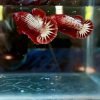
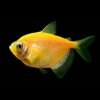

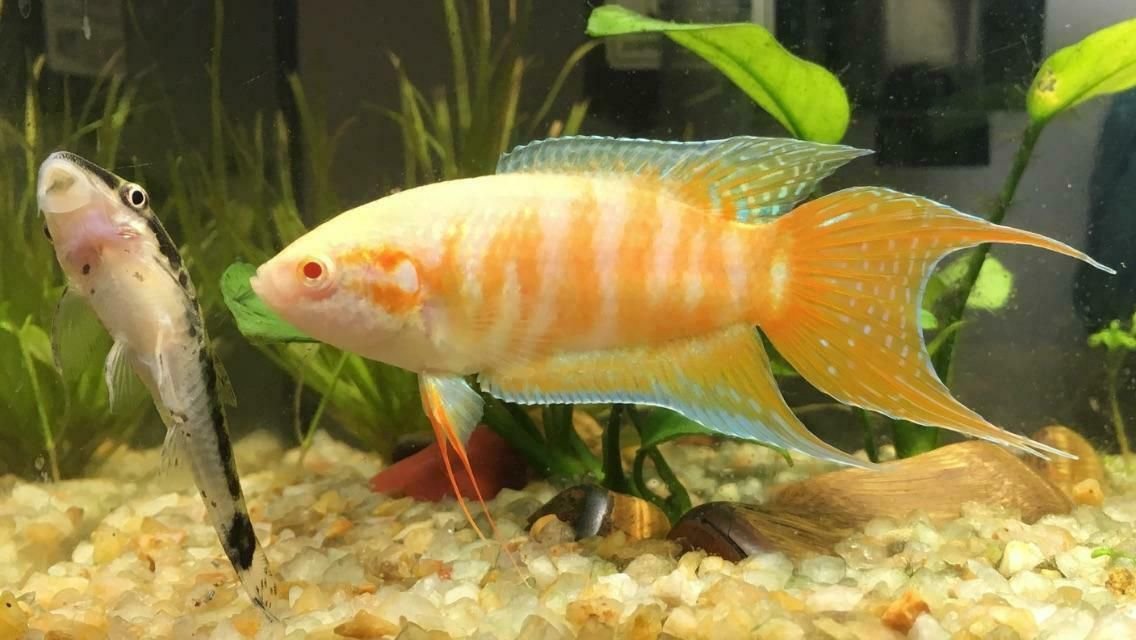

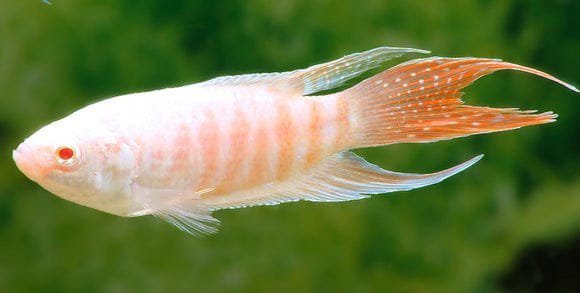
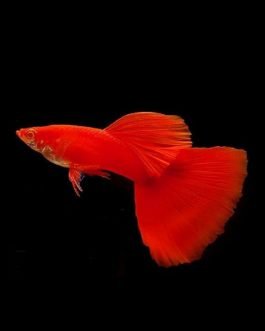
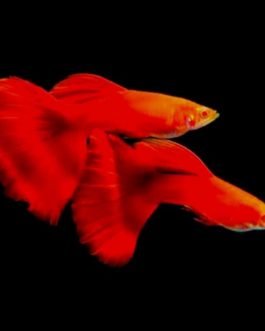
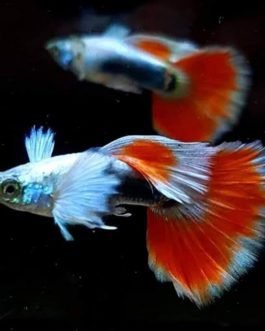
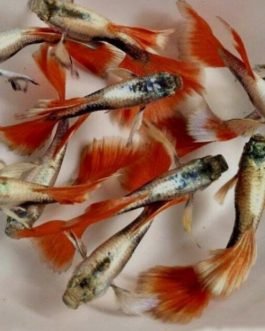
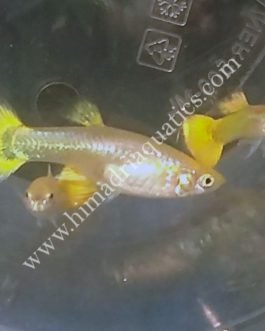
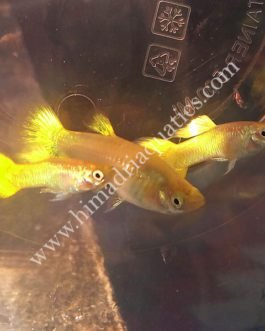
csubinfeb (verified owner) –
Bought 1 pair of albino paradise, fishes are very healthy and active.